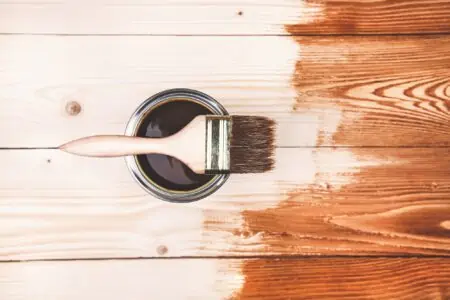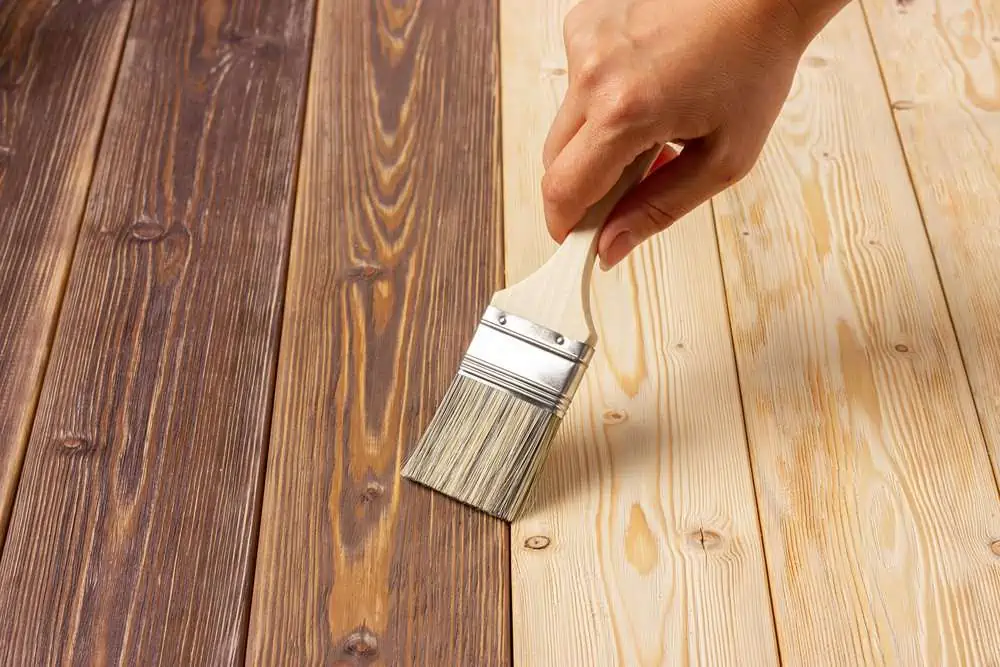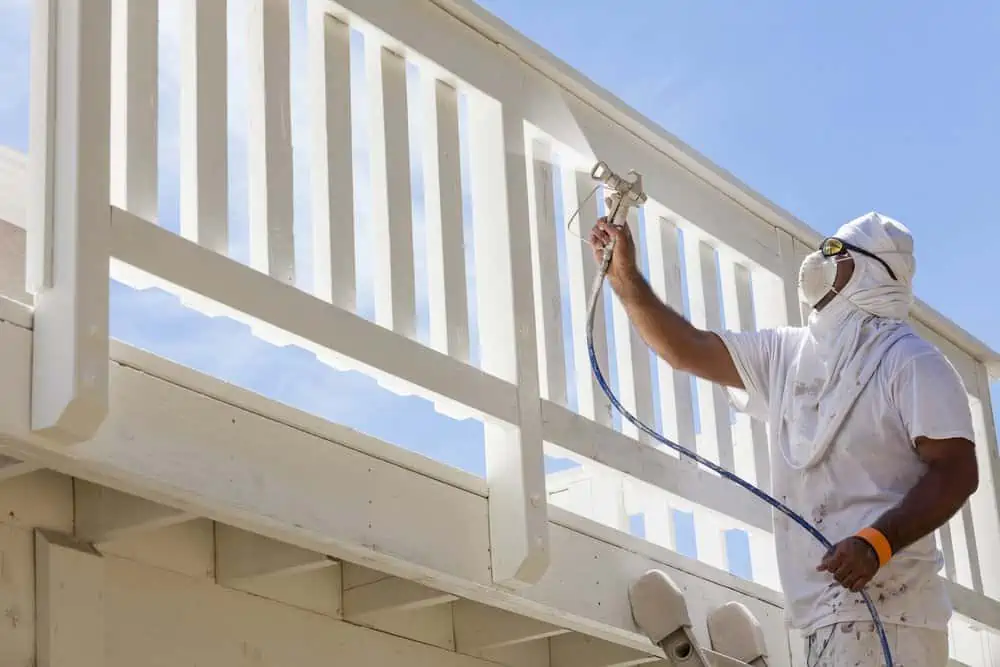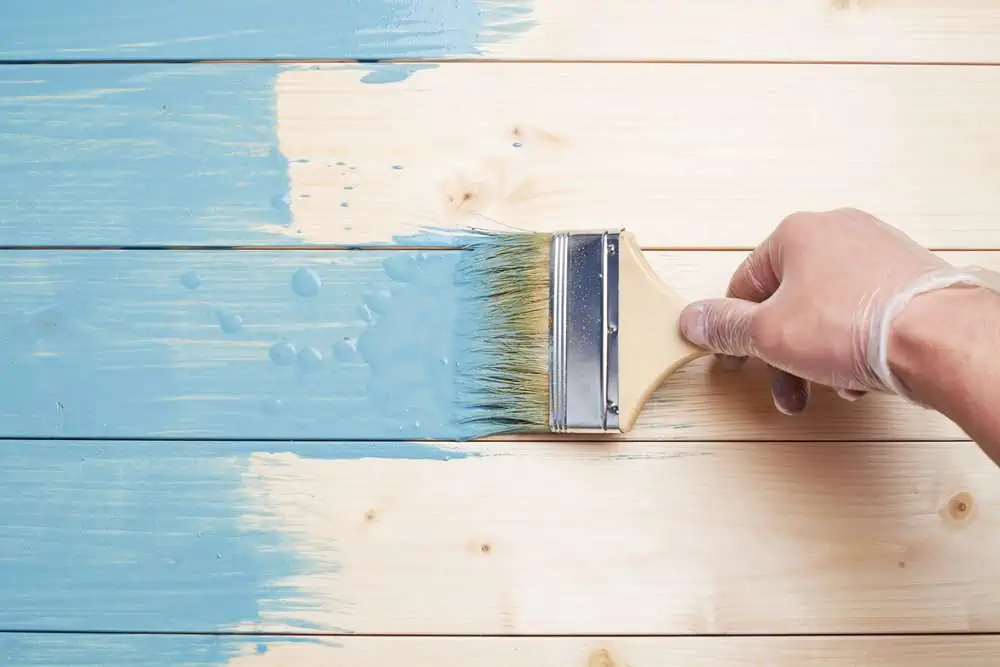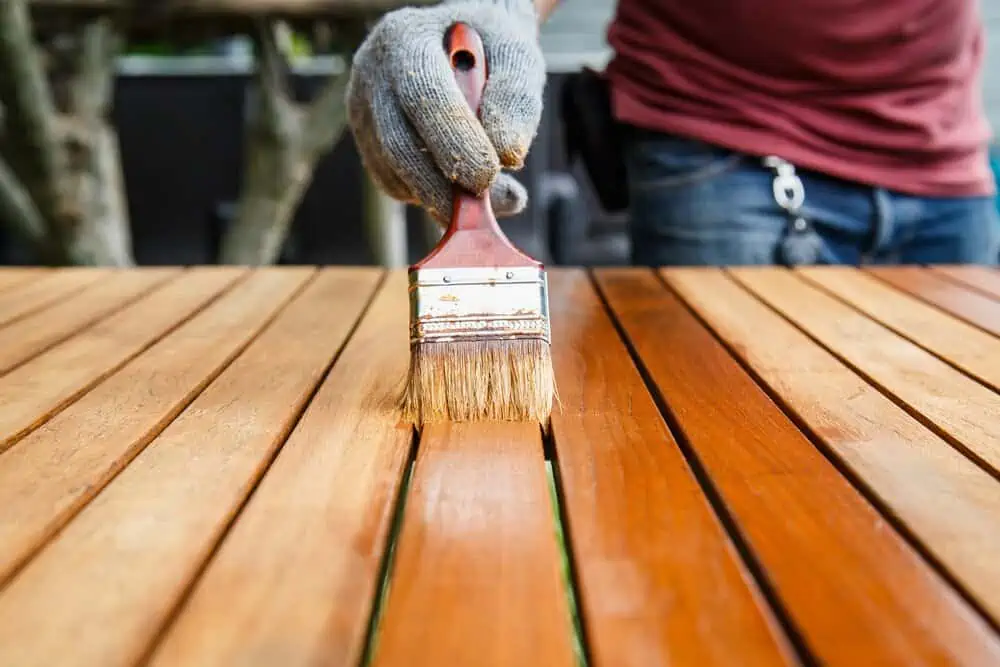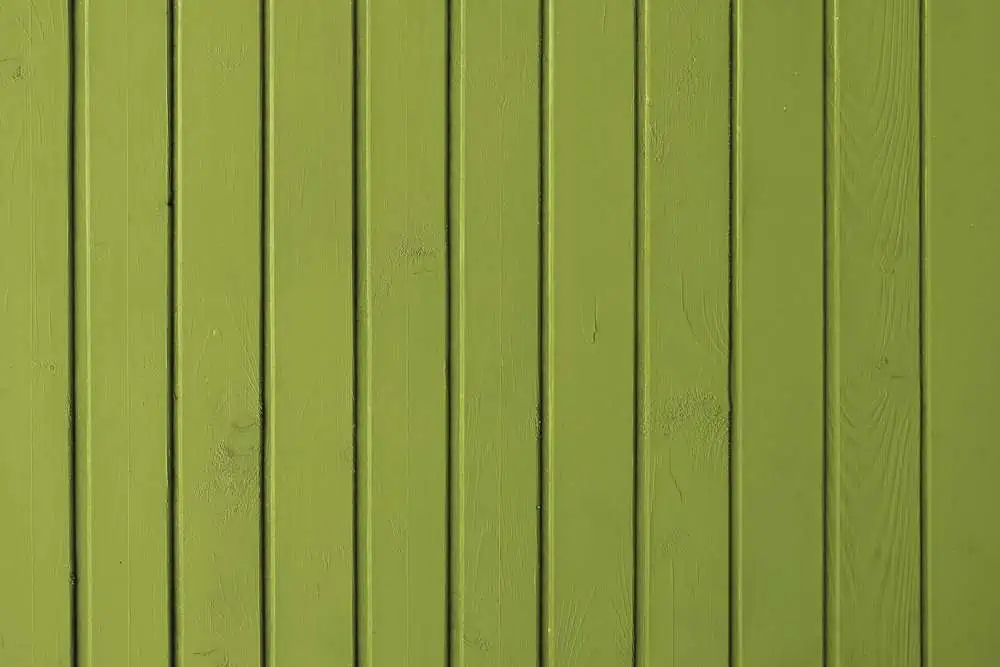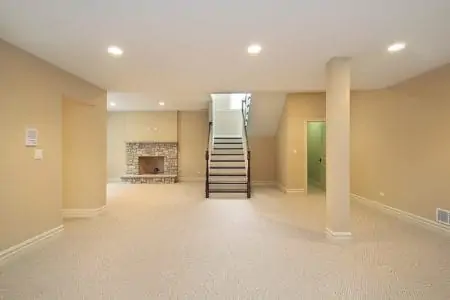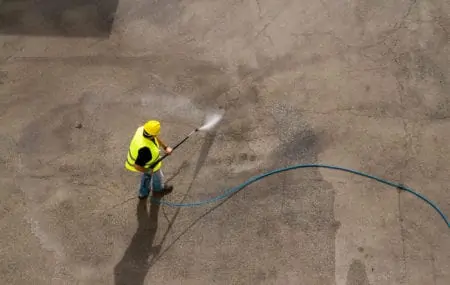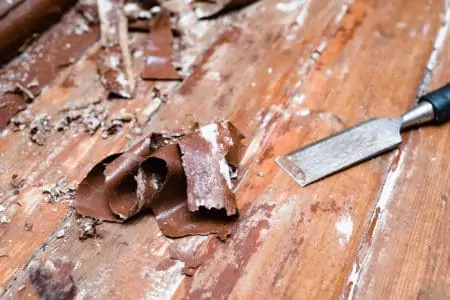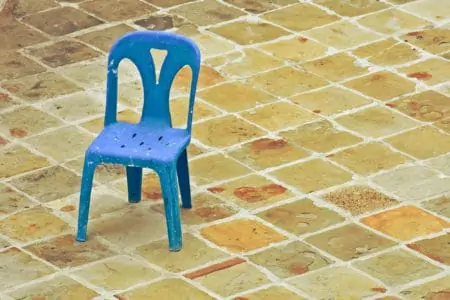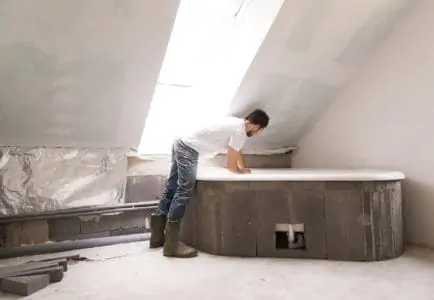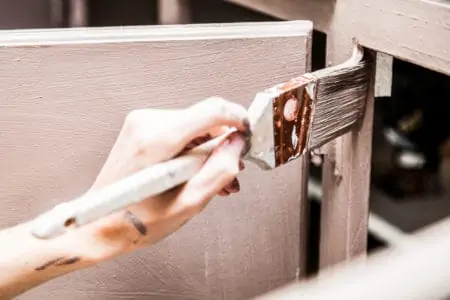Is your deck in dire need of a paint job, but you don’t know where to start? We can show you how to paint a deck quickly and efficiently, plus tips for choosing the best color.
All you need is patience, a few tools and materials, and a deck shielded from the sun to get that nice and beautiful finish.
Key Takeaways
- Prep the deck: Clean, sand, and repair the deck before painting to ensure a smooth surface and proper adhesion of the paint.
- Choose the right time: Paint the deck when temperatures are between 60-85 degrees Fahrenheit and avoid direct sunlight for best results.
- Pick the right paint: Consider the type of wood, durability, opacity, texture, and base when selecting the best paint for your deck.
- Maintenance tips: Keep your painted deck in good condition by cleaning it regularly, using furniture pads, and sealing it periodically.
- Can You Paint Over Old Deck Paint?
- What is the Best Time to Paint a Deck?
- How to Prepare a Deck for Painting
- How to Paint a Deck with a Roller
- How to Pick a Paint for a Deck
- Best Paint for a Previously Painted Deck
- How to Pick a Primer for a Deck
- How to Paint an Old or Damaged Deck
- Deck Painting Ideas
- Tips For Maintaining a Painted Deck
- FAQs
- What Color Will You Paint Your Deck?
Can You Paint Over Old Deck Paint?
Doing the prep work is the most critical step when learning how to repaint a deck. Painting over old paint can be tricky because you have to make sure the old paint isn’t flaking or peeling.
And, if it is, you need to ensure that the chipped, cracked, or peeled paint is removed. It’s best to clean and sand the surface before applying any new stain or paint.
What is the Best Time to Paint a Deck?
The optimum time of year to paint or stain a deck is in the late spring. Temperatures are optimal, ranging from 60 to 85 degrees Fahrenheit and the evenings are mild. You will need four dry days to prepare, apply, and allow a finish to completely dry after it has been applied.
As for the exact time of day, avoid painting or staining the deck when the surface is exposed to direct sunlight. It makes it difficult to adhere and disrupts the color’s uniformity.
How to Prepare a Deck for Painting
Don’t just slap a new finish over the old one. Make sure you prep things properly for the best before and after results.
What You’ll Need
- Flat scraper/putty knife.
- Wire brush.
- Electric sander/sanding sponge.
- Broom.
- Power washer.
- Hammer.
- Exterior-grade putty.
1. Wash the Deck
Start by removing everything from the deck and sweeping it. Use a power washer to give the deck a proper cleaning. If you don’t have one, they can be rented from your local hardware store.
If mold and mildew are a concern, apply a special mold deterrent and scrub it into the deck using a wire brush. Allow the deck to dry overnight.
2. Scrape the Deck
When dealing with peeling paint, remove it before continuing the process. Sand the surface and make it as smooth as possible. Use a wire brush and sweeping strokes to remove dislodged paint.
Then use a scraper (preferably a flat one) and shove it under the loose paint to remove it. Ensure you don’t gouge the wood as you’re scraping.
3. Sand the Deck
Before sanding, use a hammer and nail set to countersink any nails protruding from the surface.
Sanding smoothes the surface and ensures the coat of paint will adhere. Sanding can be done more quickly with an electric sander, like this Black+Decker model. But if you don’t have one, sanding sponges are a good alternative.
4. Repair the Deck
Before painting the deck, check it thoroughly for any wobbly boards and then nail them back into place. Take out and replace any damaged boards with brand new boards.
Look for any nails that have become corroded; if you find any, replace them with fresh nails. Use the hammer to knock down any protruding or elevated nails, and then smooth them out so they are flat with the board.
Use an exterior-grade putty, like Minwax, to fill in any holes or cracks in the wood. Apply the putty with your fingers and use sandpaper to smooth it.
How to Paint a Deck with a Roller
A roller is easiest for fast and full coverage.
What You’ll Need
- Painter’s tape.
- Plastic sheets.
- Exterior deck paint.
- Brush.
- Roller.
1. Cover the Area
Mask the lower portion of the railing, walls, and any surfaces you don’t want to paint accidentally using painter’s tape. Cover the walls and doors using plastic sheets.
2. Prime
If it’s a new deck, use an exterior primer to prep the surface for paint. This will hold the paint to adhere better and help it last longer.
Top Tip
Start the priming and painting process only when the deck is covered in the shade to avoid rapid drying and flaking.
3. Apply the Paint
If your deck has a wood ceiling or posts that you want to paint, start with those. Always paint from top to bottom and leave the actual flooring for last. You can use a brush to paint the edges or corners of the deck.
Paint the larger portions of the deck with a paint roller. Always use a smooth motion and follow the grain of the wood. Use a moderate amount of paint at a time to avoid thick dry paint or clumping.
Feel free to apply up to three coats of paint on the deck. You can touch it up with a paint brush for a smoother finish. Also, use a paint brush for areas that look patchy or uneven.
How to Pick a Paint for a Deck
Before jumping in and painting the deck with leftover paint stored in the garage, there are some factors to consider first.
Wood Type
To get started, think about the species of wood that was used to construct your deck. Different species of softwood and hardwood have varied requirements and preferences.
Deck paint is easily absorbed by softwoods such as pine and spruce. But because they’re soft, it’s best to use alkyd or oil-based products to get maximum protection.
For hardwoods, go with acrylic or latex-based products that can easily be refinished in a few years.
Durability
The amount of foot traffic and ultraviolet radiation the deck paint is exposed to and the weather conditions will determine how long the paint lasts.
Acrylic deck paints are frequently made for horizontal applications. Meaning the surface will be walked on, have furniture placed on it, and be exposed to the elements.
Before applying deck paint, the surface must first be properly prepared, as this is one of the most important aspects in determining how long the paint will last.
If you want results that will last as long as possible, be sure to carefully follow the instructions provided by the manufacturer to clean and prepare the surface for painting.
Opacity
The paint’s opacity will determine the amount of wood grain that can be seen once the wood has been treated. Solid deck paint is most commonly used because it is better at hiding the impact that the elements and the passage of time have on your deck.
But, if you have new deck boards, consider using a deck stain that is translucent because this will allow the grain and texture of the wood to be seen.
Newer decks that are not yet showing symptoms of aging are ideal candidates for a semi-transparent deck paint, which is another choice.
Texture
The texture of the deck paint can range from smooth to textured to exceptionally textured.
Smooth paint is typically used for vertical surfaces because smooth-painted surfaces have the potential to become slippery. But textured and extremely textured deck paints contain an ingredient that provides grip for walking. This is a crucial consideration if you get frequent rain in your area.
Therefore, using deck paint that has texture can help reduce the risk of accidents involving falls.
Sheen
There are deck paint formulas that dry to a matte finish, while others dry to a glossy sheen. Certain deck paints with a mix that produces a high shine are more prone to showing marks, such as footprints.
However, some people find the muted appearance of matte deck paint more appealing.
Base
Paint for the deck can either be water or oil-based. Water-based formulas are more frequently used and provide the benefit of being simple to clean up with just some water and mild soap.
Best Paint for a Previously Painted Deck
You can use oil-based paint for a deck that was previously painted with water-based paint, but it doesn’t work the other way around.
If you don’t know the type of product currently on your deck, use oil-based paint. If you’re set on using latex-based, then you’ll have to give the surface a good sanding first to open the pores again.
Paint vs. Stain
Paint is thicker and more long-lasting than stain, but stain needs to be reapplied more regularly. If you want more control over the final look of your project, then paint may be the better option.
Deck stain colors the wood but still permits the natural grain to show through. They are considered transparent or semi-transparent and should only be used on wood that hasn’t been painted before.
Deck stains are available in many opacities; some provide only a trace of color, while others are virtually opaque or semi-transparent. Most deck stains also contain a sealer component, which protects the wood from exposure to the weather.
Paint is superior to stain in terms of its ability to conceal flaws because it entirely masks the wood grain. Because of this, paint is an excellent choice for decks with a few boards changed, particularly when there is a clear distinction between old and new boards. A fresh coat of paint will cover the imperfections and give the deck a contemporary and unified appearance.
But consider staining the deck if it is situated in a damp area, is close to the ground, or has poor air circulation. Paint that is exposed to consistent moisture tends to blister and peel.
How to Pick a Primer for a Deck
Primers for wood typically come in one of two fundamental formulations: oil-based or latex-based.
Latex-based are more common due to their low VOCs, ease of application, and fast dry times. However, they don’t penetrate and protect the wood as well as oil-based.
Oil-based primers adhere to the surface more effectively, but they do take up to 24 hours to dry.
A new primer is available that dries much more quickly than its predecessor. This dries rapidly but still allows the topcoat to adhere correctly.
How to Paint an Old or Damaged Deck
Painting an old or damaged deck will require additional prep work. Consider these helpful tips:
- Always use wood filler to cover old deck defects.
- Never begin painting without stripping loose paint first.
- Sand the surface and level it to make sure you get a quality paint job.
Deck Painting Ideas
Here are a few popular choices if you’re looking for some tips and ideas for colors.
Redwood Paint
Redwood paint is perfect for maintaining that natural vibe and forest-like theme. It adds personality to the deck and works really well whether you opt for light or dark-colored furniture. Slap on some colored outdoor rugs for some added coziness, and you’re good to go.
Dark Walnut
Perfect for modern and vintage decks alike, dark walnut is an excellent choice if you’re wondering what color to pick. It has a natural look and matches all exterior house colors. This deck paint would be perfectly paired with outdoor rattan furniture.
Spray Solid White
One might argue that white is a picky choice, and you’d be somewhat right. However, white is also a color that works in a variety of setups.
You can opt for spray painting your deck white to avoid having to use a roller or a brush. Throw some colored exterior rugs or adorn your patio furniture with colored throw pillows to make the scenery more vivid.
Robin’s Egg Blue
If you’re going for a different approach, you can always try painting the deck using robin egg paint. This gorgeous light blue color combines with all sorts of pastels but also works with neutrals if you have a coastal-themed outdoor paint scheme.
Honey
Of all these examples, honey is probably the choice closest to the wood’s natural color. Honey paint makes a deck look brand new with a very slight orange hue. A honey deck perfectly complements trees, shrubs, flowers, or a neat and healthy lawn.
Olive Green Solid Paint
Olive green is a great shade to use for a deck and works well with classic and more contemporary home facades. It is also versatile and can be combined with a wide range of colors, including red, black, and taupe.
There are many tones of green, ranging from a light sage to dark forest green, but this olive-green paint caught our attention.
Tips For Maintaining a Painted Deck
Proper cleaning is the most important thing to maintaining a painted deck. But there is more you can do to protect it.
- Give your deck a regular cleaning using dish soap and water.
- Use furniture pads.
- Invest in outdoor rugs.
- Sweep the deck as often as you can.
- Seal your deck every now and then.
- Don’t drag furniture across the deck.
FAQs
What Color Will You Paint Your Deck?
Knowing how to paint a deck yourself can save you a lot of money. Make sure to use quality stains and paints and invest in brushes and rollers that can be reused. This will also help you achieve better painting results.
